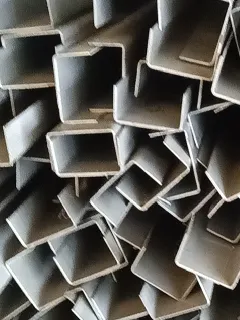loading...
- No. 9, Xingyuan South Street, Dongwaihuan Road, Zaoqiang County, Hengshui, Hebei, China
- admin@zjcomposites.com
- +86 15097380338
- Welcome to visit our website!
Molded FRP Solutions - Durable, Lightweight, and Customizable
Exploring Molded FRP A Revolutionary Material for Modern Applications
Molded Fiber Reinforced Plastic (Molded FRP) has emerged as a transformative material in various industries, driven by its exceptional properties and versatility. This composite material, consisting of a polymer matrix reinforced with fibers, primarily glass or carbon, is known for its lightweight, high strength-to-weight ratio, and resistance to corrosion. These features make Molded FRP an ideal choice for applications ranging from construction to aerospace.
Exploring Molded FRP A Revolutionary Material for Modern Applications
Furthermore, the lightweight nature of Molded FRP opens new doors for innovation in design and engineering. Its low density allows designers to create more intricate shapes and structures without compromising structural integrity. In the construction industry, for instance, Molded FRP is increasingly used in building facades, bridges, and even furniture. Its ease of handling and installation reduces labor costs and construction time, making it a cost-effective alternative to heavier materials.
molded frp

In addition to its mechanical properties, Molded FRP offers excellent thermal and electrical insulation. This characteristic makes it suitable for applications in the electrical and electronics sectors, where temperature control and insulation are paramount. Molded FRP is often employed in the manufacturing of electrical enclosures, supports, and components for various appliances, ensuring safety and efficiency.
The environmental impact of Molded FRP is also noteworthy. Many manufacturers are focusing on sustainable practices by utilizing recycled materials in the production process. This not only minimizes waste but also reduces the carbon footprint associated with traditional materials. As sustainability becomes increasingly important in modern production, Molded FRP stands out as a more eco-friendly choice, aligning with global efforts toward greener manufacturing.
Despite its numerous advantages, the production of Molded FRP has its challenges. The processing techniques require precision, and the initial costs can be higher than those of traditional materials. However, as technology advances and production methods improve, these challenges are being addressed, making Molded FRP more accessible across various sectors.
In conclusion, Molded FRP represents a significant advancement in material science, providing a unique blend of properties that cater to the evolving needs of multiple industries. Its lightweight, durability, and environmental benefits position it as a preferred choice for modern applications. As research and development continue to push the boundaries of this innovative material, we can expect to see Molded FRP playing an increasingly vital role in shaping the future of construction, transportation, and beyond. With its potential and versatility, Molded FRP is set to redefine standards in material usage across the globe.
-
The Rise of FRP Profiles: Strong, Lightweight, and Built to LastNewsJul.14,2025
-
SMC Panel Tanks: A Modern Water Storage Solution for All EnvironmentsNewsJul.14,2025
-
GRP Grating: A Modern Solution for Safe and Durable Access SystemsNewsJul.14,2025
-
Galvanized Steel Water Tanks: Durable, Reliable, and Ready for UseNewsJul.14,2025
-
FRP Mini Mesh Grating: The Safer, Smarter Flooring SolutionNewsJul.14,2025
-
Exploring FRP Vessels: Durable Solutions for Modern Fluid HandlingNewsJul.14,2025
-
GRP Structures: The Future of Lightweight, High-Performance EngineeringNewsJun.20,2025
